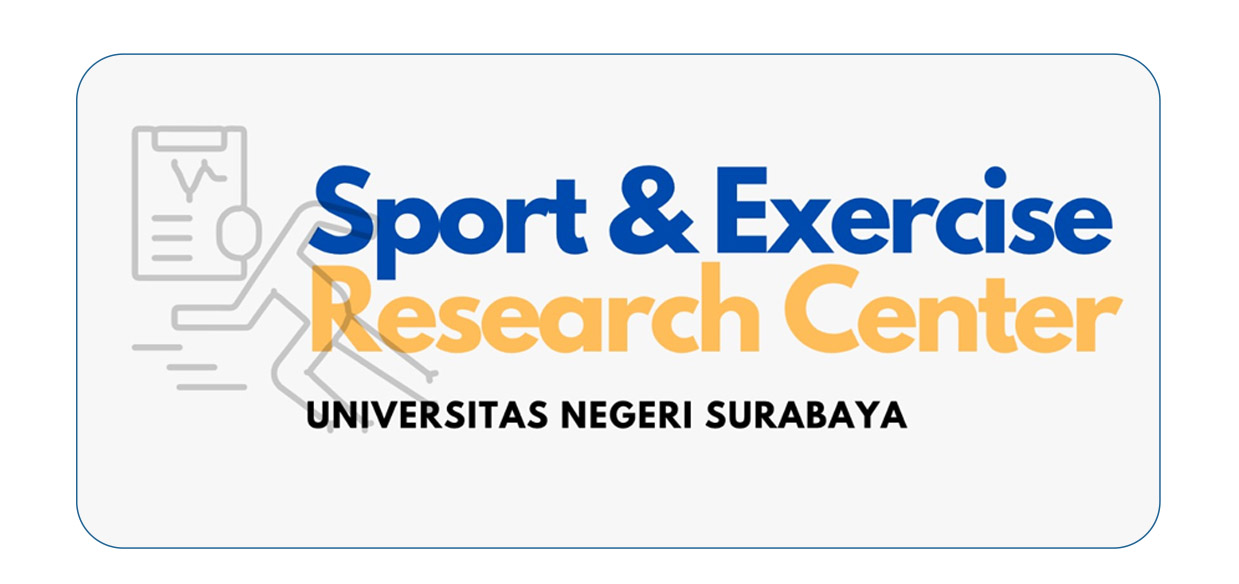Effects of Tabata Training on Fitness and Health of Sports Coaching Education Students
DOI:
https://doi.org/10.26740/jossae.v8n2.p121-128Keywords:
physical fitness, sport modification, tabata, university studentAbstract
Sports physical training is a physical activity that has a good effect on health, fitness and performance. Currently, many physical exercises have been developed, especially physical exercises using high intensity. The purpose of this study was to see the effects of high-intensity training on fitness and health in Sports Coaching Education students. In this study, the experimental pre-test post-test method was used involving seven untraining men and nine training men who are students majoring Sports Coaching Education (SCE). This study was conducted in four weeks, with frequency three times a week. The test used is the Shapiro-Wilk for normality check and Wilcoxon test to see the difference in pre-test and post-test after the sample gets high-intensity training treatment for four weeks. The results of this study showed differences in post HR Max, post bodyweight, post BMI, post sum recovery, and post HR rest (p<0.05). On the results of N-gain, tabata training was quite effective given to the group of training students than the untraining group. The conclusion in this study shows that the application of high-intensity training requires an adaptation process in the unfit student group to have a positive effect on the health and fitness of SCE students.
References
Adamu, B., Sani, M., & Abdu, A. (2007). Physical exercise and health: A review. Nigerian Journal of Medicine, 15(3). https://doi.org/10.4314/njm.v15i3.37214
Ballmann, C. G. (2021). The Influence of Music Preference on Exercise Responses and Performance: A Review. Journal of Functional Morphology and Kinesiology, 6(2), 33. https://doi.org/10.3390/jfmk6020033
Bompa, T., & Buzziechelli, C. (2015). Periodization Training for Sports.
Chen, X., Cui, J., Zhang, Y., & Peng, W. (2020). The association between BMI and health-related physical fitness among Chinese college students: A cross-sectional study. BMC Public Health, 20(1), 444. https://doi.org/10.1186/s12889-020-08517-8
Cutrufello, P. T., Benson, B. A., & Landram, M. J. (2020). The effect of music on anaerobic exercise performance and muscular endurance. The Journal of Sports Medicine and Physical Fitness, 60(3). https://doi.org/10.23736/S0022-4707.19.10228-9
D. McArdcle, W., I. Katch, F., & L. Kacth, V. (2015). Exercise Physiology.
Fisher, G., Brown, A. W., Bohan Brown, M. M., Alcorn, A., Noles, C., Winwood, L., Resuehr, H., George, B., Jeansonne, M. M., & Allison, D. B. (2015). High Intensity Interval- vs Moderate Intensity- Training for Improving Cardiometabolic Health in Overweight or Obese Males: A Randomized Controlled Trial. PLOS ONE, 10(10), e0138853. https://doi.org/10.1371/journal.pone.0138853
Greco, F., Grazioli, E., Cosco, L. F., Parisi, A., Bertollo, M., & Emerenziani, G. Pietro. (2022). The effects of music on cardiorespiratory endurance and muscular fitness in recreationally active individuals: A narrative review. PeerJ, 10, e13332. https://doi.org/10.7717/peerj.13332
Guo, L., Chen, J., & Yuan, W. (2023). The effect of HIIT on body composition, cardiovascular fitness, psychological well-being, and executive function of overweight/obese female young adults. Frontiers in Psychology, 13. https://doi.org/10.3389/fpsyg.2022.1095328
Hernawan, N., Rohendi, A., & Kardani, G. (2021). Perbandingan Pengaruh Metode Latihan Tabata Dengan Metode High Intensity Interval Training Terhadap Hasil Daya Tahan Kardiovaskular Pemain Sepakbola. Jurnal Keolahragaan, 7(2), 30. https://doi.org/10.25157/jkor.v7i2.5663
Ho, S. S., Dhaliwal, S. S., Hills, A. P., & Pal, S. (2012). The effect of 12 weeks of aerobic, resistance or combination exercise training on cardiovascular risk factors in the overweight and obese in a randomized trial. BMC Public Health, 12(1). https://doi.org/10.1186/1471-2458-12-704
Husnul, D., & Nida, K. (2021). Hubungan denyut nadi dengan daya tahan kardiovaskular ditinjau dari indeks massa tubuh. Jurnal Sport Science, 11(1), 1. https://doi.org/10.17977/um057v11i1p1-6
Lesser, I. A., & Nienhuis, C. P. (2020). The Impact of COVID-19 on Physical Activity Behavior and Well-Being of Canadians. International Journal of Environmental Research and Public Health, 17(11), 3899. https://doi.org/10.3390/ijerph17113899
Lu, Y., Wiltshire, H. D., Baker, J. S., Wang, Q., & Ying, S. (2023). The effect of Tabata-style functional high-intensity interval training on cardiometabolic health and physical activity in female university students. Frontiers in Physiology, 14. https://doi.org/10.3389/fphys.2023.1095315
Martin-Smith, R., Cox, A., Buchan, D. S., Baker, J. S., Grace, F., & Sculthorpe, N. (2020). High Intensity Interval Training (HIIT) Improves Cardiorespiratory Fitness (CRF) in Healthy, Overweight and Obese Adolescents: A Systematic Review and Meta-Analysis of Controlled Studies. International Journal of Environmental Research and Public Health, 17(8), 2955. https://doi.org/10.3390/ijerph17082955
Meng, C., Yucheng, T., Shu, L., & Yu, Z. (2022). Effects of school-based high-intensity interval training on body composition, cardiorespiratory fitness and cardiometabolic markers in adolescent boys with obesity: A randomized controlled trial. BMC Pediatrics, 22(1), 112. https://doi.org/10.1186/s12887-021-03079-z
Perissiou, M., Borkoles, E., Kobayashi, K., & Polman, R. (2020). The Effect of an 8 Week Prescribed Exercise and Low-Carbohydrate Diet on Cardiorespiratory Fitness, Body Composition and Cardiometabolic Risk Factors in Obese Individuals: A Randomised Controlled Trial. Nutrients, 12(2), 482. https://doi.org/10.3390/nu12020482
Sun, F., He, Q., Sun, X., & Wang, J. (2022). The Association between Body Mass Index and Muscular Fitness in Chinese College Freshmen. International Journal of Environmental Research and Public Health, 19(21), 14060. https://doi.org/10.3390/ijerph192114060
Xu, Y., Mei, M., Wang, H., Yan, Q., & He, G. (2020). Association between Weight Status and Physical Fitness in Chinese Mainland Children and Adolescents: A Cross-Sectional Study. International Journal of Environmental Research and Public Health, 17(7), 2468. https://doi.org/10.3390/ijerph17072468
Downloads
Published
How to Cite
Issue
Section
License
Copyright (c) 2023 JOSSAE (Journal of Sport Science and Education)

This work is licensed under a Creative Commons Attribution-ShareAlike 4.0 International License.
 Abstract views: 665
,
Abstract views: 665
, PDF Downloads: 488
,
PDF Downloads: 488
, PDF Downloads: 80
PDF Downloads: 80








